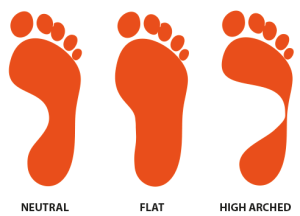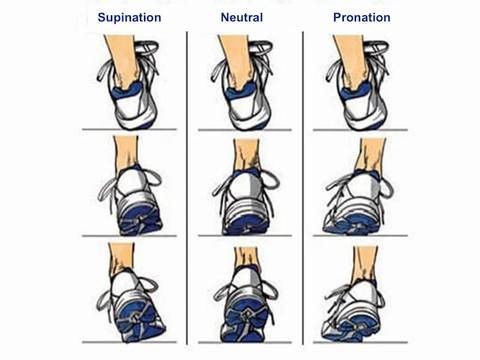Training for a marathon can be a daunting task, especially when you do not know where to start! With the Cape Town Marathon Virtual Run coming up in October 2020, we want to give you some tools to equip and empower you, to perform to the best of your abilities. We will be looking at specific factors that are important to keep in mind when training for a marathon. These include training, physical and medical factors.
Training factors:
Load management – managing ones running load (the amount of force on your body while running) is one of the most important factors when it comes to injury prevention. Often injuries occur when you go from 0 to 100 in a short period of time, instead of a steady increase in running load. The steady increase allows the body to adapt and strengthen. Chronic load is also important and refers to amount of exercise within a specific period, which is important to monitor and prevent “over loading". Over-loading the body can lead to overuse injuries. If you are struggling with an injury currently, do not let that hold you back! Consult one of our experienced Physiotherapists for some advice (here)
Strength training – some runners think that strength training might make them bulkier or slower, but that is a myth! Strength training will strengthen the muscles and joints and can prevent injuries. Incorporating strength training into your program will improve endurance and reduce fatigue when running, thus making you more efficient when you are on the road. There are different types of strength training to choose from: endurance (less weight, more repetitions), plyometrics (explosive exercises) and functional (bodyweight training), focusing on the gluteus, quadriceps and hamstring muscles. A combination of all the above will improve coordination, balance, movement efficacy and speed.
Physical factors:
Footwear – if a running shoe does not fit correctly, it will lead to an unpleasant running experience and could cause injuries. As you run, the foot adapts to weight distribution during landing and pushing off and a running shoe should be able to support the movement of the foot. We do recommend that you consult a professional (podiatrist or orthotist) for advice, especially if you are new to running. Here are a few tips to help you choose the right running shoe:
1. Determine your foot type: Wet both your feet and stand on a paper bag for 10sec Step off and look at the footprint. Use this picture to determine what type of arch you have.

2.
Determine your walking/running pattern: Look at your running shoes and determine what areas is worn out the most. This will guide you as to what areas take more weight when you run. Alternatively, have someone record the back of your legs while running.


3. Choose the right shoe for you: Go to your local running store and ask for assistance in choosing the right shoe. You now know your arch type and running pattern, you can even take your old running shoes with for reference. Always try on BOTH shoes and tell the person helping you how long you have been running, what your preferred distance is, whether you do trail or road running, how often in a week you train and any previous injuries. Lastly, when you try on your shoe, make sure there is enough toe room and that the width is sufficient for your foot to move.
Recovery – there are a number of things that can influence recovery and it is important to always listen to your body. Here are a few tips to help aid your recovery:
- Include a cool-down phase after your run – this helps the body return to “normal" and helps distribute the blood flow and lower the heart rate. It also prevents metabolic waste from pooling in the legs after a training session.
- Stretching and foam rolling – this is a form of self-message and mobilization
- Nutrition and hydration – drink and eat within 20 minutes of returning from your run. Water, carbohydrates, and protein fuels the muscles. Milk is one of the best recovery drinks!
- Consider the weather – higher temperatures mean higher heart rates, which can be challenging. Decreasing your pace on a hotter day and allowing recovery days between training days might be necessary. Warmer weather also means more sweating, so stay hydrated.
Medical factors:
Medical conditions: Common chronic medical conditions that might affect training for a marathon include asthma, anemia or being sick, to name a few.
Asthma: Exercise can often worsen symptoms and may include wheezing, coughing and shortness of breath. Even though this can be scary, exercise has shown benefits to asthma control. It can improve lung function, decrease airway inflammation, and improve oxygen uptake. Tips for training with asthma:
- Talk to your Doctor before starting a new training routine
- Have an “asthma action plan", which might include preventative measures or what to do in the case of an asthma attack
- Pay attention to your body and know the signs of an asthma attack (tight chest, shortness of breath, wheezing)
- Carry your rescue inhaler
- Avoid running in extremely hot or cold weather, which can induce asthma
Anaemia: Anemia is when there is low haemoglobin (the oxygen carrying component of blood) levels in the blood; this can cause fatigue or shortness of breath. It is most commonly caused by iron deficiency either due to dietary deficiency, inability to absorb iron properly or females when they are menstruating. Consulting a physician before starting a new training program is important, to discuss a strategy and plan going forward. Other tips include:
- Know your body and know what is “normal" for you. Recognize when your body is struggling to keep up or look out for signs such as difficulty breathing, abnormal heartbeat or chest pains.
- Start slow and build up your training load.
- Include sources of iron and Vitamin B12 to your diet, e.g. spinach, eggs, beef and lentils.
Sick: Running when you are sick is often a grey area. A general rule is that if symptoms are “above the neck", you are allowed mild to moderate exercise e.g. runny nose, nasal congestion, sneezing or a sore throat. Incorporate a lower intensity or shorter work out until these symptoms have subsided (e.g. walking instead of running). Do not exercise if your symptoms are “below the neck", such as chest congestion, hacking cough or an upset stomach. Never exercise if you experience body aches, fatigue, or fever. Let your body be your guide! Trying to train/run at your normal intensity when you are sick could lead to more serious illness or injuries. Do not exercise at all if you have COVID 19!
Training for and completing a marathon is an unbelievable accomplishment. If you have any specific health-related questions or want to be cleared before attempting to train for a marathon, consult with one of Campus Health Service's Sports Physicians for specific medical advice (here).
References:
https://www.verywellfit.com/benefits-of-strength-training-for-runners-2911925
https://www.instructables.com/id/How-to-choose-the-right-running-shoe-FOR-YOU/
https://www.runnersworld.com/beginner/g20821234/7-ways-to-fix-your-postrun-recovery/
https://www.healthline.com/health/asthma/running-with-asthma#tips
https://www.mayoclinic.org/healthy-lifestyle/fitness/expert-answers/exercise/faq-20058494

